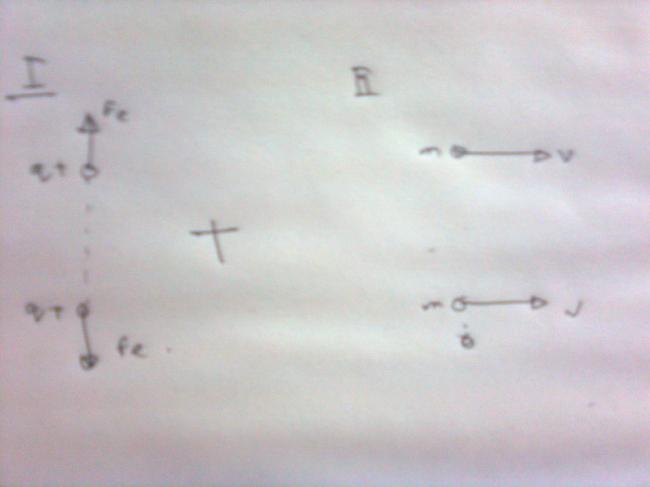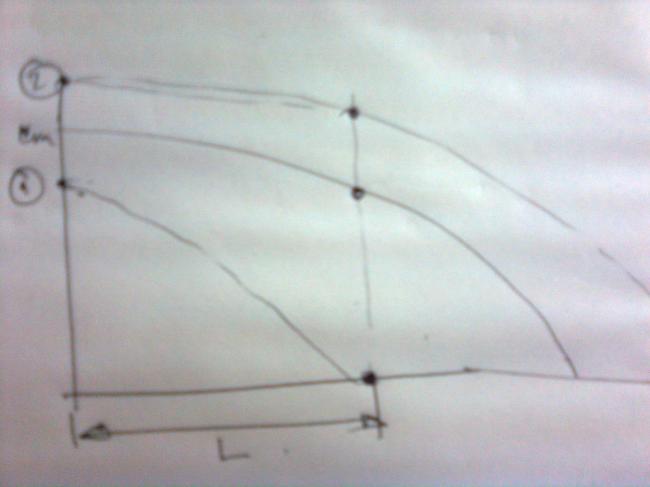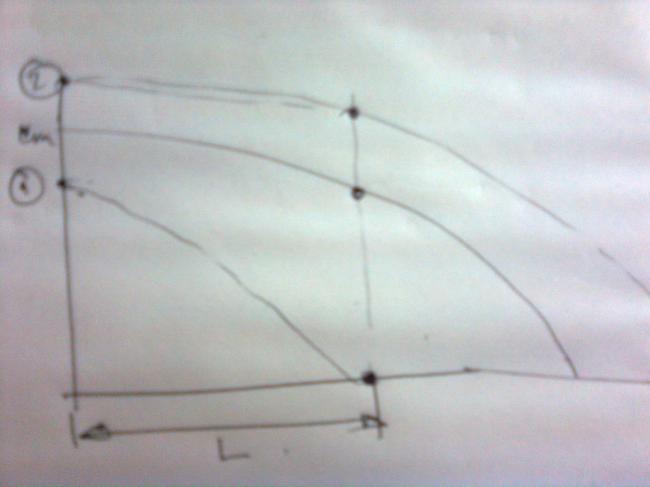Well, If you could cite any reference then it would have been better!
Two balls at height H1 and H2 are thrown with velocity V. they are having same mass and charge. the ball with height H1 falls at a distance L from the initial height. find the height of the second ball at the instant when the first ball falls at the ground ?
-
UP 0 DOWN 0 0 13

13 Answers
I guess the electrostatic force of interaction between the projectiles will be internal and should not have any effect on motion of the particles.
Please correct me if I'm wrong!
just think logically,
as one particle is above another, one will get an upward force while the other will get a downward repulsive force. hence their accn. ,range etc. will change.
@vivek: why don`t u draw the free body diagram of any one of the bodies??
I was just a bit wrong, their COM will not be affected by the 'internal' Electrostatic force. The individual particles will certainly have an effect on each others' motion.
/I was confused at this point only/
i used ...i got the answer as well but my teachers told it wouldn't be done so...we have to use the concept of centre of mass..but still i couldn't do it
will the velocity of the landing ball will become 0?
if we find the position of the c.m. when the ball(1) lands then its done.
the force on the c.m. of the system is only gravitational.
the electrostatic force becomes internal.
the motion can be consided as addition of two motions.
now a rough sketch of the tragectary can be given as
vcm is obviouslly v.
so,l≡vt
or,t≡l/t
the decrease of height of cm is x.
x=1/2gt2
=1/2g(v/t)2
so ht. of cm from ground=(h1+h2)/2-1/2g(v/l)2
now acc.to previous post
ht.of partical2 from the ground=h1+h2-g(v/l)2

t=v/l
ht.descended by cm=1/2gt2
=1/2g(v/l)2
ht.of cm above the bround=(h1+h2)/2-1/2g(v/l)2
so acc. to the previous post ht. of the 2nd partical above the ground=h1+h2-g(v/l)2
Well, if you take them in line, this is a question of seconds. But we need to be more clear on why it should be (if it is) or Why not?